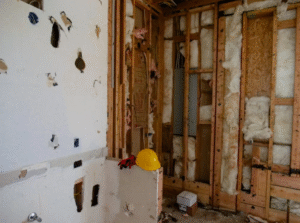Whether you’re the one overseeing a construction project or you’re managing a retail renovation, any active work site that intersects with public spaces has risk attached to it. The risk of accidents is high, and these incidents can lead to serious injury, reputational damage, and legal consequences that will cost you a lot.
These legal consequences can include construction accident claims, especially if the work involves heavy machinery or hazardous materials. Preventing public accidents isn’t just about compliance either, because you have a responsibility to your business, to yourself and to the public. Here are some of the strategies that you need to minimise your risk and protect both your workers and the public nearby.

1. Secure the construction perimeter.
The very first line of defense is keeping unauthorised people away from the work zone. You need proper fencing, barriers or safety tape that clearly marks restricted areas to do this. Gaps in the fencing or poorly marked hazard areas can lead to curious passers by, especially children. They can wander into areas where they shouldn’t be. It’s important to regularly inspect barriers to ensure that they remain in place and intact.
2. Maintain clear signage.
Signage is one of the simplest and most effective ways to communicate risk. Warning signs, directional arrows and authorised personnel only notices should be highly visible and placed at eye level. Use universally understood symbols in addition to text to ensure that message is clear to everyone, regardless of language. If your site affects sidewalks or parking areas, include detour signage and offer safe alternatives for foot traffic vehicles.
3. Keep your site both clean and organised.
If you want to avoid public accidents, you need to make sure there are no hazards for people to trip over. Messy work sites just aren’t efficient because loose tools, debris, and spilled materials can be tripping hazards that can become dangerous. By maintaining strict housekeeping standards throughout the day and especially before leaving the site each night, you’ll be able to consider that the public is one of the areas of risk. Consider assigning a safety officer or rotating team members to check for and correct hazards every day.
4. Train your staff.
Worker safety training is standard. It’s just as important to educate your staff, however, on public safety protocols. Employees should always know how to spot and respond to risks involving non workers, especially in high traffic or urban areas. Training your team on how to handle the unexpected interactions with the public ensures that you can respond to near miss-incidents instantly. You’ll also be able to report any concerns promptly.
5. Prepare yourself for emergencies.
Even with the best of precautions in place, accidents can and they do happen. It’s important to have clear, well communicated emergency responses in place. This includes first aid readiness, contact numbers for local emergency services, and designated staff who know what to do in a crisis.
With a mix of public accident planning and workplace planning, vigilance, and communication, you can prevent accidents from happening. Whether your project involves active construction, minor maintenance, or temporary installations, the safety of the people around you should be your top priority.
